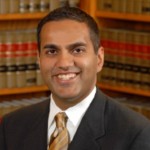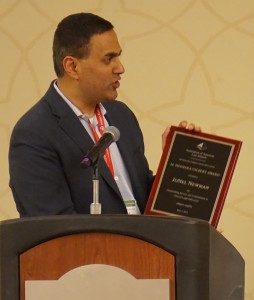Sections are central to the AALS mission of advancing excellence in legal education. AALS launched “Spotlight on Sections” in the previous issue of AALS News to highlight the various ways these groups help connect law school faculty and staff on topics of shared interest.
There are currently 100 AALS sections, each focused on a different academic discipline, affinity group, or administrative area. No matter the interests of faculty members, an AALS section is likely to fit their needs. For a full list of AALS sections and how to join, please visit www.aals.org/services/sections.
For this edition of “Spotlight on Sections,” AALS talked with the leaders of the Section on Clinical Legal Education to discuss their activities and what they have planned for the AALS Annual Meeting.

What motivated you to become involved in leading the Section on Clinical Legal Education?
Jayesh Rathod: I love being part of a community of clinical law teachers. Serving as Chair allowed me to be involved in the leadership of a section that supports a community of colleagues who are incredibly generous, creative, and hard-working.
Beyond that, part of what interested me is the growing importance of experiential education within the academy and knowing that clinical law teachers’ experiences and perspectives are important to share. This is true not only amongst ourselves, but within legal education. As law teachers, we have a lot in common, but clinical law teachers also have a unique position in the law school. There is a particular set of needs and challenges that clinical law teachers face, and I was eager to bring attention to those to make sure that they are addressed.
Christine Cimini: Legal educators are in the midst of re-envisioning what we do and how we do it. Clinical legal education plays an important role in this exploration. The section is made up of a wide and diverse group of faculty members, and it is essential to make sure that their voices are heard in this discussion. Being a part of that endeavor, with great colleagues, is a wonderful challenge that motivates my work.
Eduardo Capulong: Since graduating from law school, I’ve seen how essential it is to train law students clinically. Getting involved in the section’s leadership seemed like a natural step for me now that I’m a law teacher. It is an exciting time for the section, given the curriculum reform movement, interest in experiential education, and other changes in the academy and profession. I’m looking forward to working with colleagues on drawing on our rich tradition to inform these important discussions.
What are the important conversations currently taking place around clinical legal education?
JR: Every law school is talking about experiential education; it is one of the current buzz words in legal education. Clinical teachers are uniquely positioned to identify and to assist in implementing this type of education across the curriculum. Experiential education is what we do, it is what clinical law teachers have been doing for decades. As it becomes more mainstream and as we think about different ways to engage in experiential learning, clinical law teachers have a rich well of experience to drawn upon. Not only best practices, but things that did not work well or challenges that we can anticipate.
Another challenge that we’re thinking about is the impact of the economic stagnation and its corresponding effect on legal education. As a clinical educator and as chair of the section, I’m concerned about what this means for the security of clinical programs within law schools and what role clinical teachers can have in communicating legal education’s value. As prospective students express concern over questions of value, perhaps we need to have an ever greater role in terms of selling the value of legal education, given the practical importance of clinical education. We are working to ensure that clinical legal education is engaged in those conversations and is not automatically positioned as the expensive, and therefore expendable, part of the curriculum.
Our program at the 2016 AALS Annual Meeting is focused on assessing the value of clinical legal education. In casual conversations, people often talk about how expensive clinical legal education is, but I think that needs to be interrogated a little bit more. There is some interesting research on what the actual costs associated with clinical education are. I also think we need to be thinking broadly about the different benefits that flow from clinical programs.
CC: There are many conversations about the importance of experiential education and many corollary conversations about how to do that well—especially how can we effectively integrate clinical and non-clinical faculty in ways that will provide a better educational experience. The value/cost issue is also an ongoing part of the conversation. I would add that schools are talking about outcomes and assessments as part of the recent ABA accreditation standards, and this is an issue on which clinical faculty can provide meaningful leadership and insight.
EC: I’m particularly excited about the innovations in experiential education that have begun to flourish and how schools are integrating the knowledge, skills, and values our students need to learn. I’d like to see schools bolster traditional clinical offerings and extend the reach of clinical and experiential methodologies into the first and second years.
Professor Rathod, you mentioned the “Examining the Value of Clinical Education: Thinking Beyond Cost” panel planned for the AALS Annual Meeting. Can you talk about how this program came about?
JR: This program came about as a result of the conversations we’ve had, from the current discourse within legal education more broadly and seeing things that are happening at different institutions. There has been a productive exchange of views about how law schools can cut costs in an era of declining enrollment, which I think is absolutely a legitimate conversation that law schools are having.

Jayesh Rathod, American University, Washington College of Law, presents the M. Shanara Gilbert Award at the 2015 AALS Clinical Conference.